Mirella Sichirollo Patzer's Blog, page 30
June 23, 2013
The Romantic Life and Legend of Margaret Catchpole (1762 - 1819)
Written
by
Mirella Patzer
Horse thief, lover, mother, and convict! Some consider Margaret
Catchpole a heroine, a person of great integrity. Others believe she was nothing more than a fallen woman, thief, and criminal.
Regardless of whether she was well liked or despised, Margaret Catchpole
certainly knew how to make a name for herself. Her adventurous life and love
story have endured in movies and books. She is a legend to this very day!
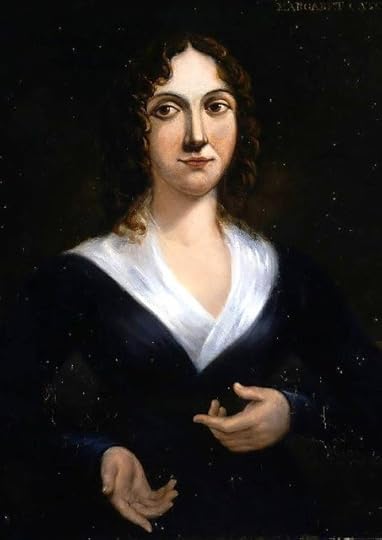
Painting of Marget Catchpole
Margaret Catchpole was born in Suffolk 1762 to a poor family.
Her father was a mere farm laborer. Described as dark-haired, smart,
determined, and obstinate, she developed a passion for horses and riding and
excelled as an equestrian. Her life was quite unremarkable until she caught the
eye of a handsome young sailor named William Laud and fell hopelessly in love
with him.
Margaret worked for several Suffolk families as a servant,
nurse-maid, and cook. No one paid much attention to her until one day, her mistress
became seriously and gravely ill. Taking matters into her own hands, Margaret hopped
on the first horse she could find, and without a saddle and only a halter, she rode
at breakneck speeds to fetch a doctor from a nearby town. Her quick actions saved
her mistress’ life. Another time, she rescued a child from drowning. Her
courage and quick thinking gained her great fame and notoriety in and around
Suffolk. She was the talk of the town!
Meanwhile, her beloved, William, joined a band of smugglers.
One day, he was trying to persuade a reluctant Margaret into a boat ride.
Another admirer of Margaret named Barry, took offence to William’s insistence
and the two men fought. Laud shot Barry, who somehow survived. Laud became a
wanted man with a hefty price over his head and he fled. For a while, Margaret did
not know where he was.
The Cobbold family greatly disapproved of William Laud and
the scandal of Barry’s shooting affected them adversely. Soon, Margaret found
herself unemployed and ill. William sent word through a man named Cook that he was hiding in London and wanted Margaret to join him there. Cook persuaded Margaret to steal a horse, ride to London, and
then they could sell the horse for a profit. And this is exactly what she did. From
the Cobbold’s stable, she stole a strawberry roan and rode 70 miles in less than 10 hours
to London disguised as a man.
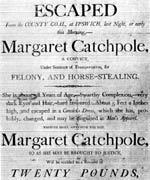
But a strawberry roan is a most unusual color for
a horse and she was easily spotted and apprehended in London.
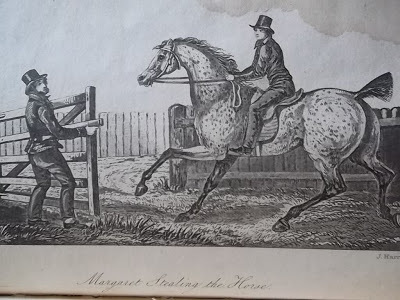
Back then, horse stealing carried the death penalty. She pleaded
guilty at her trial, and after evidence regarding her previous good character
had been given, was asked if she had anything to say why sentence of death
should not be passed upon her. She spoke with firmness, regretting her fault
but not praying for mercy. Even when the death sentence was pronounced, she
remained composed until she saw her old father crying in the court. Much to her
surprise, the Cobbald family whom she had stolen the horse from, came to her
defense and pleaded for her life. They succeeded and her sentence was commuted transportation
to Australia. While she waited in jail, Margaret strove to be a good prisoner.
That’s when she learned of William’s whereabouts again. Together,
they planned to escape to Holland. With a gardening frame and a linen rope, she
scaled a 22 foot wall topped with spikes and jumped to freedom on the other
side. She donned sailor’s garb and they ran to the sea.
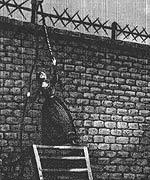
Sadly, they were
discovered on a Suffolk beach. William was shot to death and Margaret was captured,
tried, and convicted, receiving another death sentence. Luckily, her sentence
was once again commuted, but this time, she would be transported to Australia
with two other female criminals.
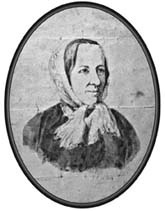
Eager to make a fresh start, she made a good life for
herself in Australia. At first, she worked as a cook for the commissary.
Determined to stay out of trouble, she chose good friends and worked for
reputable families. This led to a pardon for her crimes. She married, had several
children, ran a small store, became a midwife and healer, and even purchased a
small farm. Throughout her life in Australia, she continued to write letters to
her past employer, Richard Cobbold, which were carefully preserved and have
immortalized her life story.
She survived floods and hard times, but died of influenza on 13 May 1819.
WE LOVE COMMENTS

From History and Women









by
Mirella Patzer
Horse thief, lover, mother, and convict! Some consider Margaret
Catchpole a heroine, a person of great integrity. Others believe she was nothing more than a fallen woman, thief, and criminal.
Regardless of whether she was well liked or despised, Margaret Catchpole
certainly knew how to make a name for herself. Her adventurous life and love
story have endured in movies and books. She is a legend to this very day!

Painting of Marget Catchpole
Margaret Catchpole was born in Suffolk 1762 to a poor family.
Her father was a mere farm laborer. Described as dark-haired, smart,
determined, and obstinate, she developed a passion for horses and riding and
excelled as an equestrian. Her life was quite unremarkable until she caught the
eye of a handsome young sailor named William Laud and fell hopelessly in love
with him.
Margaret worked for several Suffolk families as a servant,
nurse-maid, and cook. No one paid much attention to her until one day, her mistress
became seriously and gravely ill. Taking matters into her own hands, Margaret hopped
on the first horse she could find, and without a saddle and only a halter, she rode
at breakneck speeds to fetch a doctor from a nearby town. Her quick actions saved
her mistress’ life. Another time, she rescued a child from drowning. Her
courage and quick thinking gained her great fame and notoriety in and around
Suffolk. She was the talk of the town!
Meanwhile, her beloved, William, joined a band of smugglers.
One day, he was trying to persuade a reluctant Margaret into a boat ride.
Another admirer of Margaret named Barry, took offence to William’s insistence
and the two men fought. Laud shot Barry, who somehow survived. Laud became a
wanted man with a hefty price over his head and he fled. For a while, Margaret did
not know where he was.
The Cobbold family greatly disapproved of William Laud and
the scandal of Barry’s shooting affected them adversely. Soon, Margaret found
herself unemployed and ill. William sent word through a man named Cook that he was hiding in London and wanted Margaret to join him there. Cook persuaded Margaret to steal a horse, ride to London, and
then they could sell the horse for a profit. And this is exactly what she did. From
the Cobbold’s stable, she stole a strawberry roan and rode 70 miles in less than 10 hours
to London disguised as a man.

But a strawberry roan is a most unusual color for
a horse and she was easily spotted and apprehended in London.

Back then, horse stealing carried the death penalty. She pleaded
guilty at her trial, and after evidence regarding her previous good character
had been given, was asked if she had anything to say why sentence of death
should not be passed upon her. She spoke with firmness, regretting her fault
but not praying for mercy. Even when the death sentence was pronounced, she
remained composed until she saw her old father crying in the court. Much to her
surprise, the Cobbald family whom she had stolen the horse from, came to her
defense and pleaded for her life. They succeeded and her sentence was commuted transportation
to Australia. While she waited in jail, Margaret strove to be a good prisoner.
That’s when she learned of William’s whereabouts again. Together,
they planned to escape to Holland. With a gardening frame and a linen rope, she
scaled a 22 foot wall topped with spikes and jumped to freedom on the other
side. She donned sailor’s garb and they ran to the sea.

Sadly, they were
discovered on a Suffolk beach. William was shot to death and Margaret was captured,
tried, and convicted, receiving another death sentence. Luckily, her sentence
was once again commuted, but this time, she would be transported to Australia
with two other female criminals.

Eager to make a fresh start, she made a good life for
herself in Australia. At first, she worked as a cook for the commissary.
Determined to stay out of trouble, she chose good friends and worked for
reputable families. This led to a pardon for her crimes. She married, had several
children, ran a small store, became a midwife and healer, and even purchased a
small farm. Throughout her life in Australia, she continued to write letters to
her past employer, Richard Cobbold, which were carefully preserved and have
immortalized her life story.
She survived floods and hard times, but died of influenza on 13 May 1819.
WE LOVE COMMENTS

From History and Women









Published on June 23, 2013 16:56
June 21, 2013
The Inquisitor's Wife by Jeanne Kalogridis
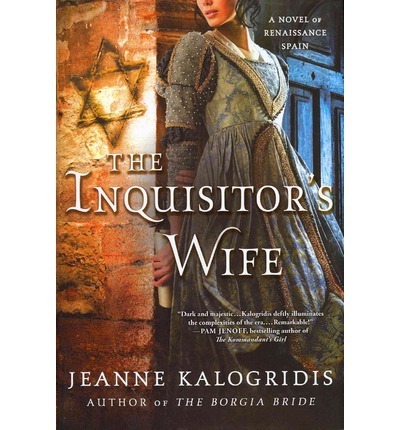
From Jeanne
Kalogridis, the bestselling author of The Borgia Bride and The Scarlet Contessa, comes a tale of love, loss and
treachery set during the perilous days of the Spanish Inquisition
1481 Seville: The
Inquisition makes its first appearance in Spain. Its target: conversos, Christians of Jewish
descent—specifically those who practice Judaism secretly in their homes. The
penalty for “crypto-Judaism”: Burning at the stake.
Marisol Garcia, a
young conversa, is
hurriedly wed to Gabriel, a civil lawyer working for the Inquisition, in hopes
that he will protect her. But she still yearns for the childhood love who
abandoned her four years earlier, and she’s shocked when he reappears suddenly
at her wedding.
When her father is
arrested and tortured, Marisol finds herself caught between her love for him
and her desire to save the lives of her people. After becoming a favorite of
the ruthless Queen Isabella, Marisol discovers a dangerous secret about her
former lover, Antonio, and finds herself trapped in a life-threatening web of
intrigue. As the Inquisition’s snares tighten around her, Marisol’s love for
Antonio and loyalty to her Jewish family is tested as never before…
THE INQUISITOR’S WIFE reveals the real motivation behind the Inquisition, a frank glance at a
“saintly” queen, and the struggles of a maligned people against crushing
forces.
THE INQUISITOR’S WIFE is a novel set in 15th
century Seville, a most turbulent era where the Inquisition is actively seeking
out and doing away with conversos, Jews who have turned to Christianity to
protect themselves, but who clandestinely still practice the Jewish faith. Leaders
of the Inquisition have spies everywhere, seeking out anyone who is suspect,
permitting neighbors, family, and friends to identify conversos.
Marisol Garcia loves her mother who is a conversa. In secret,
she has been teaching Marisol the rituals of Judaism. At first, Marisol is
young and does not fully understand what she is being taught, but later, as she
grows older, she fully comprehends the teachings and vehemently protests, her
relationship with her mother in discord. As the Inquisition becomes ever more
intense and their interest turns to Marisol and her family, events in her life
turn tragic with her mother’s rumored suicide. Despite Marisol’s promise to
marry her true love, to protect his daughter, Marisol’s father urgently arranges
a marriage to Gabriel Hojeda, a lawyer for the Inquisition. But even being trapped
in this unhappy marriage does not keep Marisol safe. Her life becomes even more
complicated when her beloved returns.
THE INQUISITOR’S WIFE is a wonderfully complex novel with an
intricate plot. Numerous plot twists change the characters – no one is who they
appear to be at first. If you have never read a novel by Jeanne Kalogridis
before, then you are in for a real treat. Her heroines are strong, courageous,
and usually face insurmountable dangers and profound dilemmas. The Renaissance was
a time of great artistry, but also of great darkness and danger. Kalogridis
does not shy away from showing readers the dreadful practices and terror of the
time. The story contains some torture and sexuality. And she writes deliciously
cruel antagonists, both male and female, who always add much conflict and spice
to her stories. There is also a very beautiful love story intertwined! There
are always underlying virtues such as trust, honesty, and courage that leave a
strong moral message. The prose is beautiful and flowing, easily read and
enjoyed. I highly recommend this novel and then further recommend you read one
of her other novels. There is much to keep you entertained for hours.









Published on June 21, 2013 09:37
May 31, 2013
Reign by Ginger Garrett

Beyond the Drama,
Her Heart Was Real
From the moment her
marriage to prince Ahab thrusts her into the intrigues of palace life,
Jezebel’s exotic beauty opens doors and her will breaks down walls. Torn from
her homeland and wed to power in a strange country, Jezebel vows to create a
legacy and power all her own. Some might call her a manipulative schemer, bent
on having her way. But they don’t know the whole story, and she was much, much
worse.
As she moves through
the halls of power, her heart struggles between devotion to the gods she
worships, the prince who loves her, and her thirst for revenge. She sparks a
battle between her strangely powerless gods and the God of palace administrator
Obadiah—a God who confronts her with surprising might. She will fight, though
victory may cost her everything.
Reign is the fictionalized biography of the notorious Jezebel
of the Bible. The story opens with Jezebel’s hatred of her twin sister and
shoving her to her death in a sacrifice.
The story unfolds through the point of view of Jezebel, her
husband Prince Ahab, and Obadiah, a palace administrator. What makes this novel
unique is the fact that the main heroine is abhorrent to our modern day
sensibilities. As queen, she promotes murder and sacrifice, killing infants, rampant
prostitution, the drinking of blood, worship of numerous gods, and pure evil. You
will not like her, a most unusual predicament for most readers.
Yet the story, although slow in places, was compelling and
shocking enough to hold my interest. I love a good villain - the more vile, the better. Well written and woven with intriguing
historical details, this novel was a very unusual, but interesting read, one that is still haunting me.
WE LOVE COMMENTS

From History and Women









Published on May 31, 2013 09:38
May 30, 2013
Black Venus by James MacManus
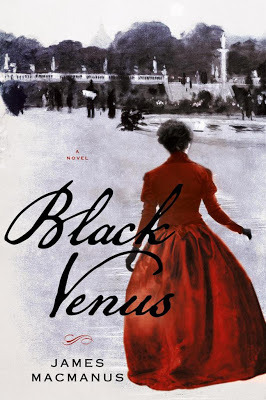
A
vivid novel of Charles Baudelaire and his lover Jeanne Duval, the Haitian
cabaret singer who inspired his most famous and controversial poems, set in
nineteenth-century Paris.
For
readers who have been drawn to The
Paris Wife, Black Venus captures
the artistic scene in the great French city decades earlier, when the likes
of Dumas and Balzac argued literature in the cafes of the Left Bank. Among
the bohemians, the young Charles Baudelaire stood out—dressed impeccably thanks
to an inheritance that was quickly vanishing. Still at work on the poems that
he hoped would make his name, he spent his nights enjoying the alcohol, opium,
and women who filled the seedy streets of the city.
One
woman would catch his eye—a beautiful Haitian cabaret singer named Jeanne
Duval. Their lives would remain forever intertwined thereafter, and their
romance would inspire his most infamous poems—leading to the banning of his
masterwork, Les Fleurs du Mal, and
a scandalous public trial for obscenity.
James
MacManus's Black Venus re-creates
the classic Parisian literary world in vivid detail, complete with not just an
affecting portrait of the famous poet but also his often misunderstood,
much-maligned muse.
Black Venus is a novel about Charles Baudelaire and his mistress, Jeanne Duval. Charles
Baudelaire was not a man of affluence, however, he yearned to be so. He desired
the luxuries of life and strived for it, even at the risk of his own
reputation. He spent money lavishly, gambling and womanizing, even indulging in
drink and drugs. His mother and stepfather often came to his rescue when his
debts got out of control and imposed a strict allowance, severely restricting
him.
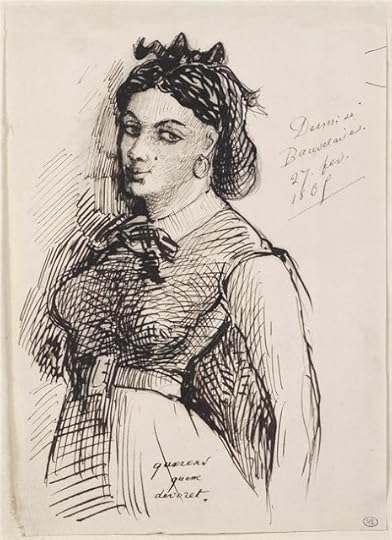
Sketch of Jeanne Duval
And then in an
obscure cabaret, he met the woman who would become his obsession, an alluring
Creole woman from Haiti named Jeanne Duval. He dubbed her his Black Venus. She
captivated him in every way and he wanted to possess her at all costs. She
inspired his poetry - graphically sexual, explicit, and descriptive. She used Charles
as a means to raise her own status in life. Jeanne even made clothing purchases
at elite shops and charged them to Charles’ mother. Jeanne took everything she
could from the relationship that was tumultuous and lasted for decades.
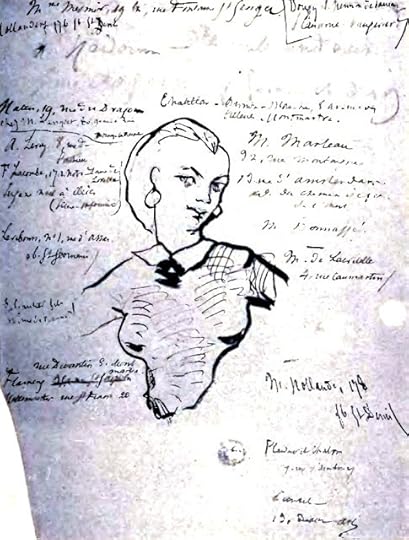
Sketch of Jeanne Duval
The novel truly takes
the reader in the 19th century France, the fear of the revolution,
the artists, the cafes. The poems Duval inspired were published, but due to
their sexuality, were banned by the government, bankrupting his publisher and
rendering Charles a very poor man indeed. Edward Manet befriends Charles and
soon Manet paints Jeanne. Unlike Charles, however, his work brought Manet fame
and wealth, and increased Duval’s fame.
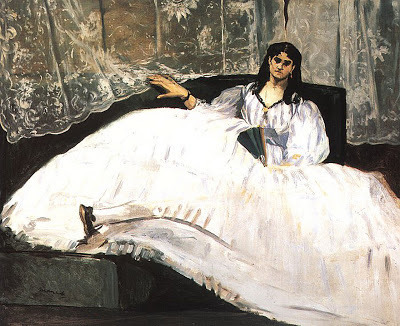
Painting of Jeanne Duval by Edouard Manet
Black Venus is a
poignant novel, heart-breaking and forlorn, almost a tragedy. It is a tale of
betrayal, jealousy, obsession, and forbidden love. A magnetic story to say the
least!
WE LOVE COMMENTS

From History and Women









Published on May 30, 2013 08:37
May 21, 2013
Barbara Castlemaine's Daughters
In the 17th century, bearing a royal child was evidently a certain
way of securing a pension from the Privy purse, so it’s hardly
surprising that all Charles’ liaisons were fruitful.
Many
novels have been written about the notorious Barbara Villiers, who
became first Palmer, then Countess of Castlemaine, completing her rise
to nobility as the 1st Duchess of Cleveland, but the lives of the three
sons and three daughters she presented to her royal lover took quite a
different turn to their famous mother.
Lady Anne Fitzroy
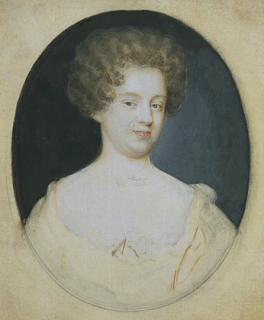
Lady Anne Fitroy Countess of Sussex
Anne was born in 1661, and Barbara claimed she was
conceived on the night of Charles’ coronation in May 1660, her enemies
were quick to suggest the baby was either her husband, Roger Palmer's,
or her other lover’s, Philip Stanhope, 2nd Earl Chesterfield.
Roger
Palmer acknowledged Anne as his daughter, giving her his name, although
this was changed to Fitzroy when the king decided to acknowledge her as
his.
Her illegitimacy notwithstanding, Lady Anne was
very eligible, and at thirteen, she was married to the twenty-year-old
Thomas Lennard, 15th Baron Dacre and Gentleman of the Bedchamber, who
was created Earl of Sussex on the marriage.
Lennard
was an extravagant spender and gambler, and their marriage was an
unhappy one. After two years, when Anne was fifteen, she began a lesbian
liaison with Hortense Mancini, duchesse Mazarin, who had fled her own
abusive husband, Armand Charles de la Porte. This liaison was not only
shocking to the royal court, but very inconvenient in that King Charles
was also conducting an affair with ‘the Mancini’ at the time.
A letter written to Loord Roos by his sister related:
"Lady
Sussex and Madame Mazarin have privately learnt to fence, and went
downe into St. James Parke the other day with drawne swords under theire
night gownes, which they drew out and made severall fine passes with,
to the admiration of severall men that was lookers on in the Parke."
Anne’s
husband dragged her off to country like a naughty child, but instead of
coming to her senses, Anne took to her bed and wept bitterly for weeks,
kissing a miniature portrait of Hortense. Hortense’s feelings, on the
other hand seemed unaffected and she merely moved on to another lover
the Prince de Monaco while her affair with the king continued.
Anne
did not back down, however, so Lord Sussex decided on desperate
measures to get his recalcitrant wife back in line. In collusion with
his mother-in-law, who, having been ousted as king’s mistress by Louise
de Keroualle, by 1678 lived in Paris, she sent Anne to a nunnery near
her own house so she could keep an eye on her. However, Barbara’s
current lover, and English ambassador to France, Ralph Montagu, abducted
Anne from the convent and they ran off together.
Barbara’s
behaviour was considered outrageous even for her time, so her sense of
affront at her daughter's actions seems misplaced. In a letter to King
Charles, dated "Paris, Tuesday the 28th, 1678," Barbara, Duchess of
Cleveland wrote:
I was never so surprised in my
whole life-time as I was at my coming hither, to find my Lady Sussex
gone from my house and monastery where I left her, and this letter from
her, which I here send you the copy of. I never in my whole life-time
heard of such government of herself as she has had since I went into
England. She has never been in the monastery two days together, but
every day gone out with the Ambassador (Ralph Montagu), and has often
lain four days together at my house, and sent for her meat to the
Ambassador; he being always with her till five o'clock in the morning,
they two shut up together alone, and would not let my maitre d'hôtel
wait, nor any of my servants, only the Ambassador's. This has made so
great a noise at Paris, that she is now the whole discourse. I am so
much afflicted that I can hardly write this for crying, to see a child,
that I doted on as I did on her, should make me so ill a return, and
join with the worst of men to ruin me.
The
Sussex’s marriage did, it seems, get back on track for a while, and
during the 1680’s, they produced four children, two sons who died in
infancy; and two daughters, Barbara and Anne, who lived to adulthood and
were co-heirs of the Barony Dacre. However the couple separated in 1688
and Anne was widowed in 1715 and lived another seven years.
Lady Charlotte Fitzroy
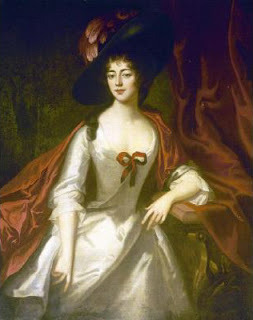
Lady Charlotte Fitzroy Countess of Lichfield
Barbara’s second daughter was more widely accepted as
Charles’ offspring, and named Charlotte after him. Born on September 5,
1664 at her mother’s Whitehall Palace apartments, Charlotte, was
Barbara’s fourth child and second daughter.
Little is
known about Charlotte, other than she rivalled her mother in beauty, had
the King’s entrancing Stuart eyes, as well as his mouth. In contrast to
her mother, Charlotte was sweet-tempered and pleasing, a contemporary
describing her in adulthood as, “a very good and virtuous lady.”
In a court full of overweening ambition, sycophancy and back-stabbing,
Charlotte was her father’s delight and the favourite niece of her uncle
James Duke of York.
When Charlotte was ten, and on the
same day as her sister Anne, a marriage was arranged for her by Anne,
Countess of Rochester, to her grandson, Edward Henry Lee. a cousin. They
were married on 6 February 1677 when the pair were 12 and 13, when
Edward was created Earl of Lichfield.
The young
married couple spent their summers at the Lee family’s country estate,
Ditchley Park in Oxfordshire, bought by Sir Henry Lee in 1580. The
couple were also given a property by the king, located near St James
Park on what is now Horse Guards Parade.
By the age of
nineteen, Charlotte already had four children and went on to have a
further 16, but the couple’s 42 year long marriage was apparently a
happy one though six of their children died young.
Sir
Edward Henry Lee, [his father's half-brother was the libertine-poet the
Earl of Rochester] was a dedicated Tory and advocate of King James II.
He followed him to Rochester in Kent after the king's escape from
Whitehall in December 1688.
Edward died in 1716 and Charlotte two years later. The inscription on their monument in Spelsbury Church reads –
“at their marriage they were the most grateful bridegroom and the most
beautiful bride and that till death they remained the most constant
husband and wife.”
Lady Barbara Fitzroy
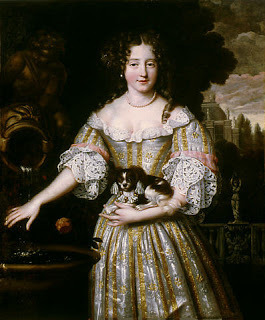
Lady Barbara Fitzroy Aged 16
Barbara was born at Cleveland
House in St Martin in the Fields, London, England on 16 July 1672, at
around the time Barbara Castlemaine was losing her position as the
king’s chief mistress to Louise de Kérouaille.
Although
her mother insisted she was a daughter of the king, Barbara was widely
thought to have been fathered by either John Churchill, later Duke of
Marlborough, or Lord Chesterfield, whom she is said to have resembled.
Roger
Palmer, Lord Castlemaine, who had remained married to Barbara
throughout her reign as king’s mistress, bequeathed the younger Barbara
his estate. Charles, however, always publicly acknowledged her as his,
while disavowing her in private.
In March 1691, eighteen-year-old Barbara gave birth to an illegitimate son of the Earl of Arran, and named the baby Charles.
James
had been confined to the Tower of London for insulting William of
Orange to his face. His father, the 3rd Duke of Hamilton, and Princess
Mary prevailed on William to release him. Both were bitterly opposed his
relationship with Barbara, so his release was with the condition that
James should renounce all further relations with Lady Barbara Fitzroy.
Their son, Charles, was raised by the Duchess of Cleveland, who
supposedly disowned her.
Barbara became a nun in the
English Priory of St. Nicholas, at Pontoise in Normandy, taking the name
Sister Benedicta, where she eventually became prioress. James was
killed in a duel in Hyde Park by Charles, 4th Lord Mohun in 1712.
Barbara signed herself as follows:
Mon
nom du monde est Barbe Fitz Roy est en Religion Benedite fille Du Roy
De La grande Bretagne Charles 2dc j'ay fait profession dans Le Couuent
des Benedictines Angloiscs De Pontoise L'annee 1691 Le 2* D'auril c'est
maison est mittige.
Translated as:
My
name in the world is Barbe Fitz Roy, in Religion it is Benedicta,
daughter of the King of Great Britain, Charles II. I made profession at
the Convent of the English Benedictines in Pontoise, the year 1691, the
2nd of April. It is my place of penance.
Barbara became Prioress of the Convent of the Hotel Dieu at Pontoise, as Sister Benedicte, dying there on May 6, 1737.
WE LOVE COMMENTS

From History and Women









way of securing a pension from the Privy purse, so it’s hardly
surprising that all Charles’ liaisons were fruitful.
Many
novels have been written about the notorious Barbara Villiers, who
became first Palmer, then Countess of Castlemaine, completing her rise
to nobility as the 1st Duchess of Cleveland, but the lives of the three
sons and three daughters she presented to her royal lover took quite a
different turn to their famous mother.
Lady Anne Fitzroy

Lady Anne Fitroy Countess of Sussex
Anne was born in 1661, and Barbara claimed she was
conceived on the night of Charles’ coronation in May 1660, her enemies
were quick to suggest the baby was either her husband, Roger Palmer's,
or her other lover’s, Philip Stanhope, 2nd Earl Chesterfield.
Roger
Palmer acknowledged Anne as his daughter, giving her his name, although
this was changed to Fitzroy when the king decided to acknowledge her as
his.
Her illegitimacy notwithstanding, Lady Anne was
very eligible, and at thirteen, she was married to the twenty-year-old
Thomas Lennard, 15th Baron Dacre and Gentleman of the Bedchamber, who
was created Earl of Sussex on the marriage.
Lennard
was an extravagant spender and gambler, and their marriage was an
unhappy one. After two years, when Anne was fifteen, she began a lesbian
liaison with Hortense Mancini, duchesse Mazarin, who had fled her own
abusive husband, Armand Charles de la Porte. This liaison was not only
shocking to the royal court, but very inconvenient in that King Charles
was also conducting an affair with ‘the Mancini’ at the time.
A letter written to Loord Roos by his sister related:
"Lady
Sussex and Madame Mazarin have privately learnt to fence, and went
downe into St. James Parke the other day with drawne swords under theire
night gownes, which they drew out and made severall fine passes with,
to the admiration of severall men that was lookers on in the Parke."
Anne’s
husband dragged her off to country like a naughty child, but instead of
coming to her senses, Anne took to her bed and wept bitterly for weeks,
kissing a miniature portrait of Hortense. Hortense’s feelings, on the
other hand seemed unaffected and she merely moved on to another lover
the Prince de Monaco while her affair with the king continued.
Anne
did not back down, however, so Lord Sussex decided on desperate
measures to get his recalcitrant wife back in line. In collusion with
his mother-in-law, who, having been ousted as king’s mistress by Louise
de Keroualle, by 1678 lived in Paris, she sent Anne to a nunnery near
her own house so she could keep an eye on her. However, Barbara’s
current lover, and English ambassador to France, Ralph Montagu, abducted
Anne from the convent and they ran off together.
Barbara’s
behaviour was considered outrageous even for her time, so her sense of
affront at her daughter's actions seems misplaced. In a letter to King
Charles, dated "Paris, Tuesday the 28th, 1678," Barbara, Duchess of
Cleveland wrote:
I was never so surprised in my
whole life-time as I was at my coming hither, to find my Lady Sussex
gone from my house and monastery where I left her, and this letter from
her, which I here send you the copy of. I never in my whole life-time
heard of such government of herself as she has had since I went into
England. She has never been in the monastery two days together, but
every day gone out with the Ambassador (Ralph Montagu), and has often
lain four days together at my house, and sent for her meat to the
Ambassador; he being always with her till five o'clock in the morning,
they two shut up together alone, and would not let my maitre d'hôtel
wait, nor any of my servants, only the Ambassador's. This has made so
great a noise at Paris, that she is now the whole discourse. I am so
much afflicted that I can hardly write this for crying, to see a child,
that I doted on as I did on her, should make me so ill a return, and
join with the worst of men to ruin me.
The
Sussex’s marriage did, it seems, get back on track for a while, and
during the 1680’s, they produced four children, two sons who died in
infancy; and two daughters, Barbara and Anne, who lived to adulthood and
were co-heirs of the Barony Dacre. However the couple separated in 1688
and Anne was widowed in 1715 and lived another seven years.
Lady Charlotte Fitzroy

Lady Charlotte Fitzroy Countess of Lichfield
Barbara’s second daughter was more widely accepted as
Charles’ offspring, and named Charlotte after him. Born on September 5,
1664 at her mother’s Whitehall Palace apartments, Charlotte, was
Barbara’s fourth child and second daughter.
Little is
known about Charlotte, other than she rivalled her mother in beauty, had
the King’s entrancing Stuart eyes, as well as his mouth. In contrast to
her mother, Charlotte was sweet-tempered and pleasing, a contemporary
describing her in adulthood as, “a very good and virtuous lady.”
In a court full of overweening ambition, sycophancy and back-stabbing,
Charlotte was her father’s delight and the favourite niece of her uncle
James Duke of York.
When Charlotte was ten, and on the
same day as her sister Anne, a marriage was arranged for her by Anne,
Countess of Rochester, to her grandson, Edward Henry Lee. a cousin. They
were married on 6 February 1677 when the pair were 12 and 13, when
Edward was created Earl of Lichfield.
The young
married couple spent their summers at the Lee family’s country estate,
Ditchley Park in Oxfordshire, bought by Sir Henry Lee in 1580. The
couple were also given a property by the king, located near St James
Park on what is now Horse Guards Parade.
By the age of
nineteen, Charlotte already had four children and went on to have a
further 16, but the couple’s 42 year long marriage was apparently a
happy one though six of their children died young.
Sir
Edward Henry Lee, [his father's half-brother was the libertine-poet the
Earl of Rochester] was a dedicated Tory and advocate of King James II.
He followed him to Rochester in Kent after the king's escape from
Whitehall in December 1688.
Edward died in 1716 and Charlotte two years later. The inscription on their monument in Spelsbury Church reads –
“at their marriage they were the most grateful bridegroom and the most
beautiful bride and that till death they remained the most constant
husband and wife.”
Lady Barbara Fitzroy

Lady Barbara Fitzroy Aged 16
Barbara was born at Cleveland
House in St Martin in the Fields, London, England on 16 July 1672, at
around the time Barbara Castlemaine was losing her position as the
king’s chief mistress to Louise de Kérouaille.
Although
her mother insisted she was a daughter of the king, Barbara was widely
thought to have been fathered by either John Churchill, later Duke of
Marlborough, or Lord Chesterfield, whom she is said to have resembled.
Roger
Palmer, Lord Castlemaine, who had remained married to Barbara
throughout her reign as king’s mistress, bequeathed the younger Barbara
his estate. Charles, however, always publicly acknowledged her as his,
while disavowing her in private.
In March 1691, eighteen-year-old Barbara gave birth to an illegitimate son of the Earl of Arran, and named the baby Charles.
James
had been confined to the Tower of London for insulting William of
Orange to his face. His father, the 3rd Duke of Hamilton, and Princess
Mary prevailed on William to release him. Both were bitterly opposed his
relationship with Barbara, so his release was with the condition that
James should renounce all further relations with Lady Barbara Fitzroy.
Their son, Charles, was raised by the Duchess of Cleveland, who
supposedly disowned her.
Barbara became a nun in the
English Priory of St. Nicholas, at Pontoise in Normandy, taking the name
Sister Benedicta, where she eventually became prioress. James was
killed in a duel in Hyde Park by Charles, 4th Lord Mohun in 1712.
Barbara signed herself as follows:
Mon
nom du monde est Barbe Fitz Roy est en Religion Benedite fille Du Roy
De La grande Bretagne Charles 2dc j'ay fait profession dans Le Couuent
des Benedictines Angloiscs De Pontoise L'annee 1691 Le 2* D'auril c'est
maison est mittige.
Translated as:
My
name in the world is Barbe Fitz Roy, in Religion it is Benedicta,
daughter of the King of Great Britain, Charles II. I made profession at
the Convent of the English Benedictines in Pontoise, the year 1691, the
2nd of April. It is my place of penance.
Barbara became Prioress of the Convent of the Hotel Dieu at Pontoise, as Sister Benedicte, dying there on May 6, 1737.
WE LOVE COMMENTS

From History and Women









Published on May 21, 2013 16:30
May 20, 2013
Royal Mistress by Anne Easter Smith
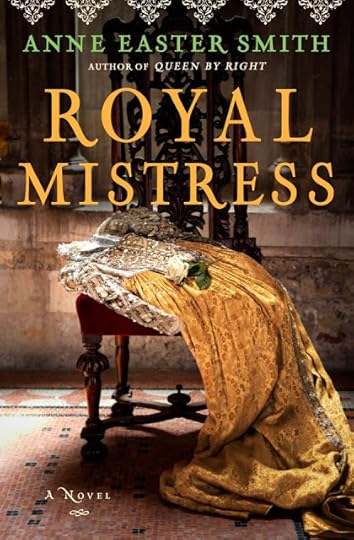
Jane
Lambert, the quick-witted and alluring daughter of a silk merchant, is
twenty-two and still unmarried. When Jane’s father finally finds her a match,
she’s married off to the dull, older silk merchant William Shore. Marriage
doesn’t stop Jane from flirtation, however, and when the king’s chamberlain,
Will Hastings, comes to her husband’s shop, Will knows King Edward will find
her irresistible.
Edward
IV has everything: power, majestic bearing, superior military leadership, a
sensual nature, and charisma. And with Jane as his mistress, he also finds true
happiness. But when his hedonistic tendencies get in the way of being the
strong leader England needs, his life, as well as those of Jane and Will
Hastings, hangs in the balance. Jane must rely on her talents to survive as the
new monarch, Richard III, bent on reforming his brother’s licentious court,
ascends the throne.
This
dramatic tale has been an inspiration to poets and playwrights for five hundred
years, and, as told through the unique perspective of a woman plucked from
obscurity and thrust into a life of notoriety, Royal Mistress is sure to enthrall today’s historical
fiction lovers as well.
Royal Mistress is
an absorbing tale about Jane Lambert, the daughter of a mercer who becomes the
mistress of King Edward IV and other noblemen in the fifteenth century. Born
with the gift of beauty, Jane easily turns heads and attracts the attention of
every man she encounters. When she meets Thomas Grey, the Marquess of Dorset,
Jane falls irretrievably in love. He betroths her to William Shore, a much older,
but wealthy merchant. Jane soon discovers her husband is impotent and her eye
begins to wander as she contemplates seeking an annulment. When she catches the
eye of William Hastings, the king’s own chamberlain, he recommends her to the
king, a man with a voracious sexual appetite. Jane willingly becomes his
mistress until his death. Years later, when Richard III ascends the throne, he
is determined to cleanse the depraved court and Jane is one of the first to be
accused.
This novel is well
researched, full of historic characters, places, and items, and the story
compelling. There is plenty to entertain; betrayal, suspense, and plenty of
romance. The vivid prose evokes strong images, making the story engrossing and
colored with the sights and smells of the 16th century. Jane Shore
is presented as a bold, spirited woman, witty and confident in all she does and
says. How else could she have caught the discerning eye of so many men of lofty
rank. A very entertaining novel!
WE LOVE COMMENTS

From History and Women









Published on May 20, 2013 15:14
May 10, 2013
Queen Jezebel - A Catherine de Medici Novel by Jean Plaidy
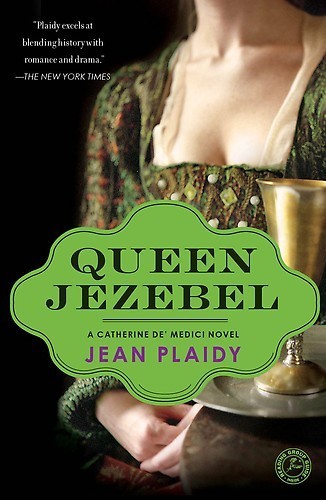
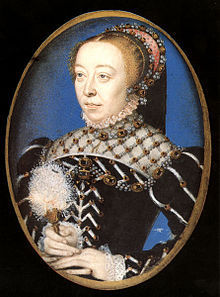
Queen Catherine de
Medici, a formidable Italian woman whose name conjures suspicions of murder and
poisoning. She first appeared in France
for her wedding to Henry II, second son of King Henry I. When King Henry I
died, followed by the dauphin Francis, his eldest son, Henry II and Catherine
ascended the throne. This outraged the citizens who did not want an Italian
woman as their queen.
The people’s dislike for Catherine continued throughout
her entire reign. In the 16th century, Italians had a reputation for
being exports in the art of poison, and Catherine, known for her razor sharp
cunning, dabbled in necromancy, poisons, and murder.
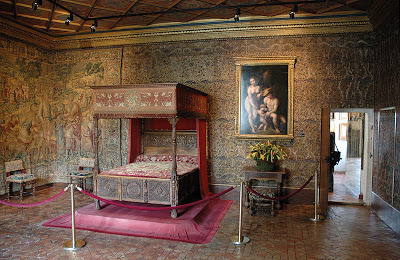
Catherine de Medici's Bedroom
Even though nothing
was ever proven against her, she did leave behind several clues of her deviousness.
First there is the secret room in her castle. It is believed she stored her poisons
in this specially constructed room filled with numerous cabinets. Peep-holes and listening tubes helped
Catherine spy on her sons, advisors, servants, and visitors.
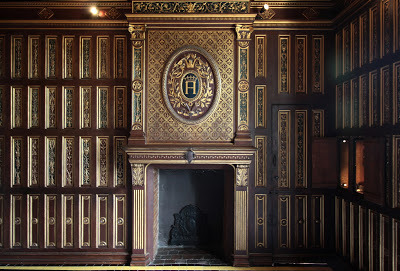
Then there is the
death of Jeanne Navarre, Catherine’s long-time nemesis.
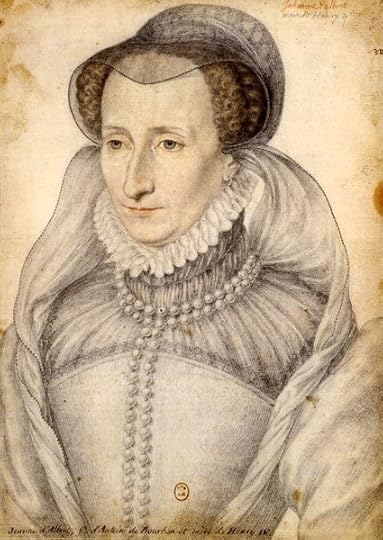
Jeanne Navarre
Catherine lured the
wary Jeanne Navarre to France and then tricked her into acquiring a set of
gloves laced with poison. You see, perfumed gloves were in high fashion in
France at that time and Catherine offered a most exquisite pair to Jeanne. Poor Jeanne, she
suffered a horrible death, which, likely was the kindling that sparked the St.
Bartholomew’s Day Massacre of the Huguenots a few weeks later. It is estimated
up to 30,000 Huguenots lost their lives.
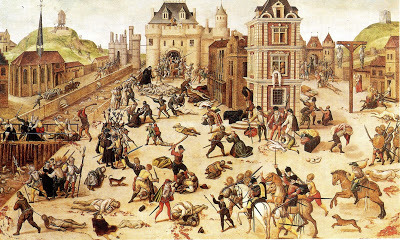
St Bartholomew Day Massacre Painting
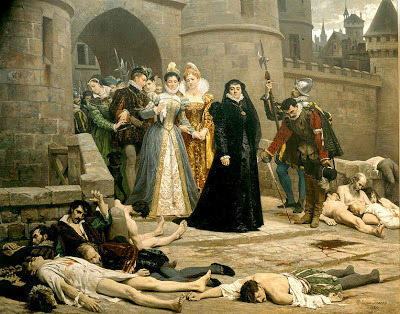
Painting of Catherine de Medici inspecting the aftermath of the massacre
Catherine de Medici's life continues to fascinate. Many fictional books have been written about her life, tempting authors because of all the intrigue and suspicions. The most detailed novel portraying her life, is a trilogy written by Jean Plaidy.
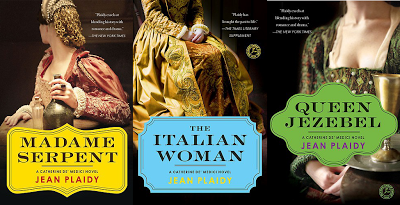
Click on here for my review of The Italian Woman and here for my review of Madame Serpent.
Queen Jezebel
Synopsis
The final novel in the classic Catherine de’ Medici trilogy from Jean Plaidy, the grande dame of historical fiction. The aging Catherine de’ Medici and her sickly son King Charles are hoping to end the violence between the feuding Catholics and Huguenots. When Catherine arranges the marriage of her beautiful Catholic daughter Margot to Huguenot king Henry of Navarre, France’s subjects hope there will finally be peace. But shortly after the wedding, when many of the most prominent Huguenots are still celebrating in Paris, King Charles gives an order that could only have come from his mother: rid France of its “pestilential Huguenots forever.” In this bloody conclusion to the Catherine de’ Medici trilogy, Jean Plaidy shows the demise of kings and skillfully exposes Catherine’s lifetime of depraved scheming.
The novel Queen Jezebel by Jean Plaidy recounts the details of Catherine de Medici's later life. This is the third and final book of her life. Of the three novels, this is the most turbulent. It depicts her incredibly shrewdness, calculating mind, and mistrust of everyone around her, including her sons. Determined to end the hostility between the Catholics and Huguenots, Catherine arranges a political marriage between her Catholic daughter Margot and the Huguenot King Henry of Navarre. But this marriage failed to bring about the peace between the rival groups. As her control over her son, the king, wanes, she convinces him that there is a plot to assassinate him. This prompts Charles to launch the St Bartholomew day massacre to rid France of Huguenots.
The dreadful murders of Henry Guise and Jeanne Navarre play a pivotal role in this book, giving readers insight and a deeper understanding of her sordid motivations and craftiness of this formidable and cunning queen.
Like the previous two books in this series, Catherine's life is brought to life with vivid details and includes all the main characters of the period. Powerful liaisons, treachery, debauchery, hate, love, and cunning machinations to gain power unfold with clarity and excitement in this final installment. If you are intrigued with Catherine de Medici, then this is a novel not to be overlooked. It is the most comprehensively detailed book about her life. Highly recommended.
WE LOVE COMMENTS

From History and Women









Published on May 10, 2013 12:46
April 5, 2013
THE FACE THAT SUNK A THOUSAND SHIPS. (WELL 3 ANYWAY)
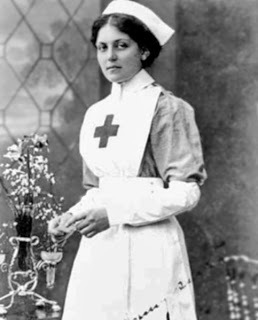
As
any old sea dog will tell you, it’s unlucky to have a woman on board ship.
(Unless the woman is naked, apparently.
Sailors make up the best
superstitions.)
But
in the case of Violet Jessop, you’d have to say the old sea dogs have a point.
Violet
started life as a landlubber, her parents were Irish sheep farmers living in
Bahia Blanca in Argentine.
Violet was a born survivor - three of her nine
siblings did not live beyond infancy.
She herself developed tuberculosis when
she was a child and doctors said she would die. But she didn’t.
As events would
later prove, Violet was pretty much unsinkable.
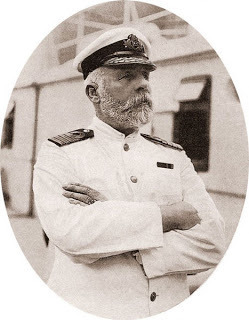
When
her father died, her mother took Violet and her family back to England. When
Violet left school she joined the navy, to see the sea.
When
she was 23, she sailed on the RMS Olympic as a stewardess.
At that time the Olympic
was the world’s largest luxury liner and was under the command of Captain Edward
Smith.
Three months after Violet stepped on board the Olympic collided with the
cruiser HMS Hawke off the Isle of Wight.
The RN blamed the Olympic for the
crash, but stopped short of blaming Jessop personally.
Taking
this as a warning, Violet decided to sail next on something unsinkable.
The
Titanic.
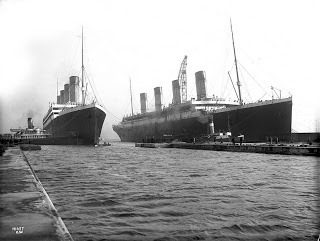
The Olympic and Titanic before Violet got to work
She rubbed shoulders with Jack and Rose for just four days before her
luck ran out again.
After the ship hit the iceberg, Violet was ordered up on
deck to set an example ‘to the foreign speaking people.’
The
Irish?
She
was ordered into lifeboat 16, and it was from there that she watched the
Titanic go down, - all the while thinking: ‘there’s a great idea for a movie in
this somewhere.’
She was rescued the next morning by the Carpathia.
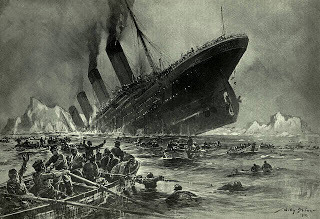
A
lesser soul would have given up seafaring but Violet was made of sterner stuff.
Besides, it was obvious where the problem lay. The captain on the Olympic and the Titanic was Captain Edward Smith.
Clearly, he was the problem.
So
Violet, fairly confident her bad run was done, joined up on His Majesty’s
Hospital Ship Brittania just in time
for World War One - and you guessed it, it hit a mine in 1916 and sank in the
Aegean in 1916.
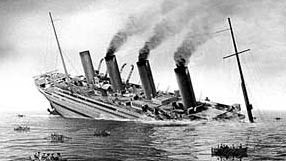
just another day at the office for Violet
She
grabbed her toothbrush from her cabin - she was an old hand at being sunk, and apparently
she always said her toothbrush was the one thing she missed when the Titanic
went down (the one thing??)
Despite being sucked under the water and striking
her head on the ship’s keel she somehow surfaced and was rescued by a lifeboat.
Years later, when she complained to a doctor about headaches, it was discovered
she had fractured her skull.
Having
gone down with the ship three times in five years a lesser soul might have
looked for a job on dry land.
Not Violet. She continued to work for the White
Star and Red Star lines after the war.
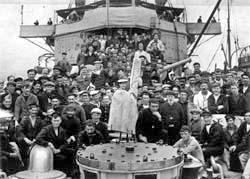
Neptune had done his best, and gave up
trying to scuttle her. She spent the next thirty years at sea without further
mishap and made her last voyage when she was 63.
The
unsinkable Violet Jessop lived to a grand old age of 84, finally foundering in
1971.
Some
wags would have you believe she was finally buried at sea. Not true. Violet was
buried in Hartest, in Suffolk, England

Colin Falconer is the author of the internationally bestselling CLEOPATRA, DAUGHTER OF THE NILE and over twenty other novels.
See more history from Colin Falconer at
LOOKING FOR MR GOODSTORY
WE LOVE COMMENTS

From History and Women









Published on April 05, 2013 01:59
March 28, 2013
Easter Weekend Special - 3 Free Kindle Books
Easter Weekend Special - 3 novels free on Amazon!
Orphan of the Olive Tree
Free
March 30 and 31
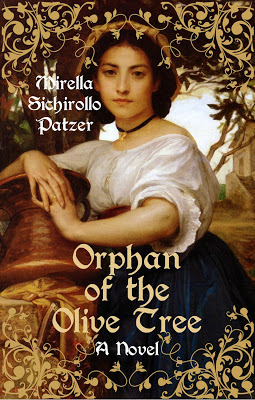
Free Download
A blood oath, a dreadful curse, and the evil eye.
A dark family secret that will shatter lives and the woman who risks everything to keep it buried!
From two neighboring villas in the heart of the Tuscan countryside to the elegance of Siena; from a world steeped in ancient superstitions to a culture where family honour is paramount comes, this multi-layered novel of the lives, loves, secrets and strivings of two women and their families in the 13th century.
A blood oath to wed their first born children binds the Benevento and Ventura families. When Prudenza Benevento learns her nemesis, Felicia Ventura, is pregnant, she is jealous and secretly casts the curse of the evil eye upon her. Felicia gives birth to twin boys. Jealous, Prudenza visciously resurrects an ancient superstition that unidentical twins can only come from different fathers. The scandal tears apart Felicia’s marriage and makes her an outcast in the small Italian village where they live.
Fate intervenes, and when Prudenza gives birth to twin daughters, she is desperate to save herself from the same scandal that ruined Felicia. She orders the midwife to take one daughter away. With only a gold ring and a brocade blanket as clues to the infant’s past, the midwife leaves the child and the items in an olive tree in front of a small convent. The nuns lovingly name the child Olivia and raise her.
Years later, in a shocking encounter, Olivia meets a young man named Luca. When an act of God nearly kills her, it is Luca who comes to her rescue. Soon, their love for each cannot be denied. When she finds herself with child, Luca offers to care for her and the child, but cannot wed her because he is already betrothed. Despite her misgivings, her love for Luca proves strong and Olivia places her faith in him and follows him to his new villa and a new life. Luca makes numerous unsuccessful attempts to avoid his forthcoming marriage and marry Olivia instead, but the blood oath and Church laws make it impossible. As the date of Luca’s wedding draws near, and the secrets of Olivia’s secret past begin to surface, long buried secrets are exposed in a twist of fate no family member can anticipate.
An absorbing novel about wicked intentions, medieval superstitions, a curse uttered in envy, undisclosed secrets, unstoppable destinies, and two generations of women and the extraordinary event that will vindicate or destroy them.
The Contessa's Vendetta
Free
March 29, 30, and 31
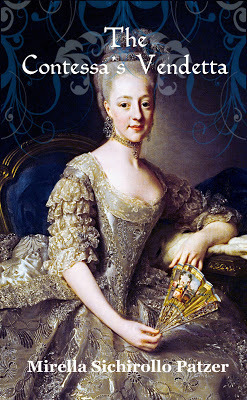
Free Download
When faced with the ultimate betrayal, a murderous vendetta is one woman's only solution!
A deadly plague is raging, killing thousands in 17th century Vicenza Italy. Carlotta Mancini struggles to protect her family and servants, but despite her precautions, she is the one who falls prey to the deadly illness. Her body is tossed into a coffin and swiftly buried in the underground, dank confines of her family’s vault. But Carlotta is not dead; she is merely unconscious because of the illness. She returns home to her beloved husband, her best friend, and her darling daughter. But before she reveals herself to her loved ones, she learns of an endless series of lies, deceits, and betrayal. As she unravels the labyrinth of shocking treachery, her wrath breathes life to an overwhelming need for vengeance. Slowly, meticulously, she launches her diabolocial vendetta. The Contessa's Vendetta is a historical fiction thriller ripe with suspense from first page to last. A tale of betrayal and revenge that will hold you spellbound until the shocking ending! The Contessa's Vendetta is a retelling of the classic novel, Vendetta by Marie Corelli. Inspired by this epic classic novel; a new and captivating tale in a new setting, a new century, and with new plot twists while remaining faithful to key story elements.
The Pendant
Free for the last time ever!
March 29, 30, and 31
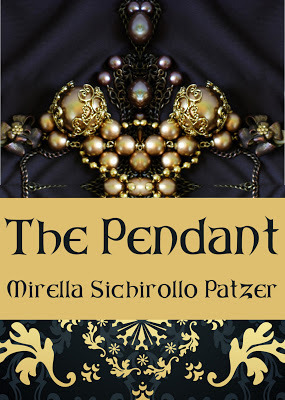
Free Download
A lost ancient treasure.
A 100 year family feud.
And a woman with a passion richer than the bloodstone pendant she wears around her neck!
In medieval Italy, as spirited and stalwart as any man, the brazen Contessa Morena is betrothed to the impoverished, black-hearted Count Ernesto, a man desperate to escape his mounting gambling debts by marrying her and laying claim to the ancient treasure secreted somewhere in the underbelly of her castle. Morena meets her match when Amoro, the handsome and brash heir to the Duchy of Genoa, who swears an oath upon his father's grave to claim her as his bride and end the feud between their families. Soon, Amoro's virile charm awakens the passion in her steadfast heart. But a treacherous plot ensnares them; Ernesto abducts Morena and renders Amoro helpless. Embroiled in a life-and-death chase, Morena learns that not even the devious madness of her captor can destroy her love for Amoro as their hearts unite and their destinies become one.
This Italian historical romance novel has it all - an ancient mystery, a bloodstone pendant with a secret, murder, vengeance, and a love story to take your breath away!
An historical gothic romance of murder, desperation, and true love!
WE LOVE COMMENTS

From History and Women









Orphan of the Olive Tree
Free
March 30 and 31

Free Download
A blood oath, a dreadful curse, and the evil eye.
A dark family secret that will shatter lives and the woman who risks everything to keep it buried!
From two neighboring villas in the heart of the Tuscan countryside to the elegance of Siena; from a world steeped in ancient superstitions to a culture where family honour is paramount comes, this multi-layered novel of the lives, loves, secrets and strivings of two women and their families in the 13th century.
A blood oath to wed their first born children binds the Benevento and Ventura families. When Prudenza Benevento learns her nemesis, Felicia Ventura, is pregnant, she is jealous and secretly casts the curse of the evil eye upon her. Felicia gives birth to twin boys. Jealous, Prudenza visciously resurrects an ancient superstition that unidentical twins can only come from different fathers. The scandal tears apart Felicia’s marriage and makes her an outcast in the small Italian village where they live.
Fate intervenes, and when Prudenza gives birth to twin daughters, she is desperate to save herself from the same scandal that ruined Felicia. She orders the midwife to take one daughter away. With only a gold ring and a brocade blanket as clues to the infant’s past, the midwife leaves the child and the items in an olive tree in front of a small convent. The nuns lovingly name the child Olivia and raise her.
Years later, in a shocking encounter, Olivia meets a young man named Luca. When an act of God nearly kills her, it is Luca who comes to her rescue. Soon, their love for each cannot be denied. When she finds herself with child, Luca offers to care for her and the child, but cannot wed her because he is already betrothed. Despite her misgivings, her love for Luca proves strong and Olivia places her faith in him and follows him to his new villa and a new life. Luca makes numerous unsuccessful attempts to avoid his forthcoming marriage and marry Olivia instead, but the blood oath and Church laws make it impossible. As the date of Luca’s wedding draws near, and the secrets of Olivia’s secret past begin to surface, long buried secrets are exposed in a twist of fate no family member can anticipate.
An absorbing novel about wicked intentions, medieval superstitions, a curse uttered in envy, undisclosed secrets, unstoppable destinies, and two generations of women and the extraordinary event that will vindicate or destroy them.
The Contessa's Vendetta
Free
March 29, 30, and 31

Free Download
When faced with the ultimate betrayal, a murderous vendetta is one woman's only solution!
A deadly plague is raging, killing thousands in 17th century Vicenza Italy. Carlotta Mancini struggles to protect her family and servants, but despite her precautions, she is the one who falls prey to the deadly illness. Her body is tossed into a coffin and swiftly buried in the underground, dank confines of her family’s vault. But Carlotta is not dead; she is merely unconscious because of the illness. She returns home to her beloved husband, her best friend, and her darling daughter. But before she reveals herself to her loved ones, she learns of an endless series of lies, deceits, and betrayal. As she unravels the labyrinth of shocking treachery, her wrath breathes life to an overwhelming need for vengeance. Slowly, meticulously, she launches her diabolocial vendetta. The Contessa's Vendetta is a historical fiction thriller ripe with suspense from first page to last. A tale of betrayal and revenge that will hold you spellbound until the shocking ending! The Contessa's Vendetta is a retelling of the classic novel, Vendetta by Marie Corelli. Inspired by this epic classic novel; a new and captivating tale in a new setting, a new century, and with new plot twists while remaining faithful to key story elements.
The Pendant
Free for the last time ever!
March 29, 30, and 31

Free Download
A lost ancient treasure.
A 100 year family feud.
And a woman with a passion richer than the bloodstone pendant she wears around her neck!
In medieval Italy, as spirited and stalwart as any man, the brazen Contessa Morena is betrothed to the impoverished, black-hearted Count Ernesto, a man desperate to escape his mounting gambling debts by marrying her and laying claim to the ancient treasure secreted somewhere in the underbelly of her castle. Morena meets her match when Amoro, the handsome and brash heir to the Duchy of Genoa, who swears an oath upon his father's grave to claim her as his bride and end the feud between their families. Soon, Amoro's virile charm awakens the passion in her steadfast heart. But a treacherous plot ensnares them; Ernesto abducts Morena and renders Amoro helpless. Embroiled in a life-and-death chase, Morena learns that not even the devious madness of her captor can destroy her love for Amoro as their hearts unite and their destinies become one.
This Italian historical romance novel has it all - an ancient mystery, a bloodstone pendant with a secret, murder, vengeance, and a love story to take your breath away!
An historical gothic romance of murder, desperation, and true love!
WE LOVE COMMENTS

From History and Women









Published on March 28, 2013 23:01
March 22, 2013
THE FIRST FEMALE PRESIDENT OF THE UNITED STATES
Who was the first female Native American female president of the
United States?
(a) Pocahantas
(b) Hiawatha
(c) this is a trick question, isn’t it?
If you answered (c) you’d be right. Because no, there has never been a female American president, never mind one with Native
American heritage.
Well, sort of. Historians are divided.
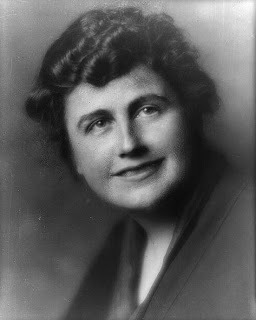
the first female president of the United States
The woman that divides opinion is was the wife of
President Woodrow Wilson - Edith Bolling Galt Wilson.
Wilson’s family were descendant of
Pocahantas on her father’s side. Pocahontas married John Rolfe, an early
British settler. Her family had a plantation before the Civil War, and were staunch
southerners and confederates.
Edith was frankly racist; to her death she adhered
to the view that the family’s “darkies”, as she called them, liked being slaves
before the Yankees came and ruined everything.
She had little formal education, and was home schooled by her grandmother.
Edith read only a few books in her life and her handwriting was so bad it was illegible.
Vivacious and pretty, she met and married a prosperous jeweler, Norman
Galt, in 1896 and lived for 12 years in the capital. Her husband died suddenly
in 1908.
The still young widow met President Wilson through a friend of hers, Helen
Bones, the president’s cousin.
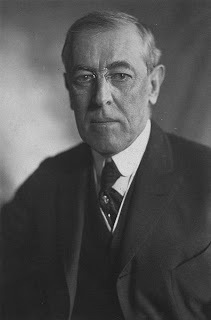
She was glamorous and tall and had no interest in politics
or government, She later admitted that at the time of the election of
1912, which sent Woodrow Wilson to the White House, she could not have named
the candidates.
Wilson had only recently been widowed but fell in love with her with scandalous
haste. According to a Washington insider joke at the time, when she heard him
propose marriage she was so surprised she nearly fell out of bed.
The Washington Post didn’t make thing easier for the President’s press
officer. Writing about the his theatre outings in its social pages they
were meant to report: "... rather than paying attention to the play, the
President spent the evening entertaining Mrs. Galt."
What was printed was:
" ... rather than paying attention to the play the President spent the
evening entering Mrs. Galt."
The Post has never been kind to Presidents.
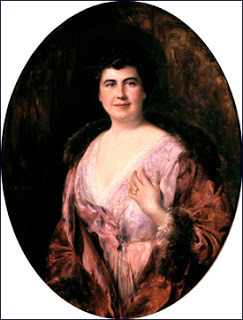
Despite the scandal, Wilson, then 58, married the 43-year-old Galt in 1915 at her Washington home in a small
affair attended by 40 guests.
She became his political confidante as well as his wife, sitting beside him during Oval Office meetings. He even trusted her with a
secret code to a drawer holding classified information.
But the very active woman suffrage movement won no support from Edith Wilson. She referred to them as “those devils in the
workhouse.” Her husband's shift on the suffrage question—he eventually favored
a national amendment granting women voting rights—resulted from political
considerations, not from any influence of his wife.
But she was the first person besides the President to receive permanent Secret
Service protection when America entered the War. As First Lady she introduced 'gasless
Sundays' and 'meatless Mondays' at the White House to set an example for the
federal rationing effort.
She had sheep graze the White House lawn to save
money on mowing it.
After the war she became the first First Lady to make international visits
with European royalty. She was both Jackie Kennedy and a Sherman tank.
But it was in September 1919, when Wilson suffered a stroke, that she left
her mark.
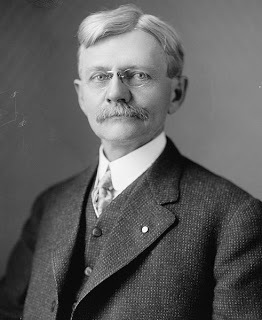
Vice President Thomas Riley Marshall
At the time there was
no Constitutional provision for replacing an incapacitated President and she didn’t want the Vice President to take over. So she misled the public and the
Congress as to how gravely ill as he was.
She said he just needed bed rest. In
fact he was totally incapacitated on his left side.
She and Wilson's physician kept his true condition
hidden from the nation for six weeks; you could do that in those days, before
investigative reporters and Wikileaks.
She couldn’t vote but she could run the country.
She took over his routine duties and decided which matters of state
should be brought to the bedridden president. She stayed up
late reading briefing papers and hand wrote Presidential orders that she said
came from her bed-ridden husband. Considering her handwriting was ineligible her Cabinet relied on her interpretation of them.
She claimed she only decided which matters to bring to his
attention and what could be resolved without him. Depending on how you read
this statement, it sounds like running the country without him.
In her memoirs she called her role
‘stewardship.’ Many historians disagree.
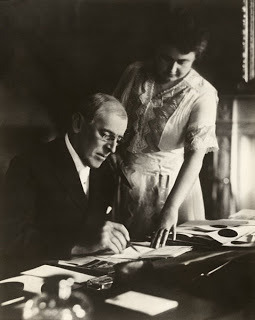
"It's nothing dear, just a declaration of war on Canada."
Although the nation faced many serious problems while Woodrow was
incapacitated—including strikes by miners and steelworkers—the White House dithered. To many it seemed that no one at all was
making decisions, and one journalist wrote that “our government had gone out of
business.”
One senator charged that the nation was under a “petticoat government,” and
rumors spread about an “Assistant President.”
When there were disagreements over her husband's envisioned League of
Nations, Edith held fast, refusing to take requests for a compromise to her
husband. The discussions broke down - a failure that contributed to the Second World War.
A frail
Wilson muddled through the last year of his Presidency.
In 1921, she and the president retired to their Washington home. He died in
1924.
She accompanied Franklin D. Roosevelt when he went to Congress on
December 8, 1941 to declare war on Japan; she attended JFK’s inauguration
in1961.
She died later that year at the age of 89 on what would have been her
husband's 105th birthday - the first female president of the United States.

Colin Falconer is the author of the internationally bestselling CLEOPATRA, DAUGHTER OF THE NILE and over twenty other novels.
See more history from Colin Falconer at
LOOKING FOR MR GOODSTORY
WE LOVE COMMENTS

From History and Women









Published on March 22, 2013 01:08



